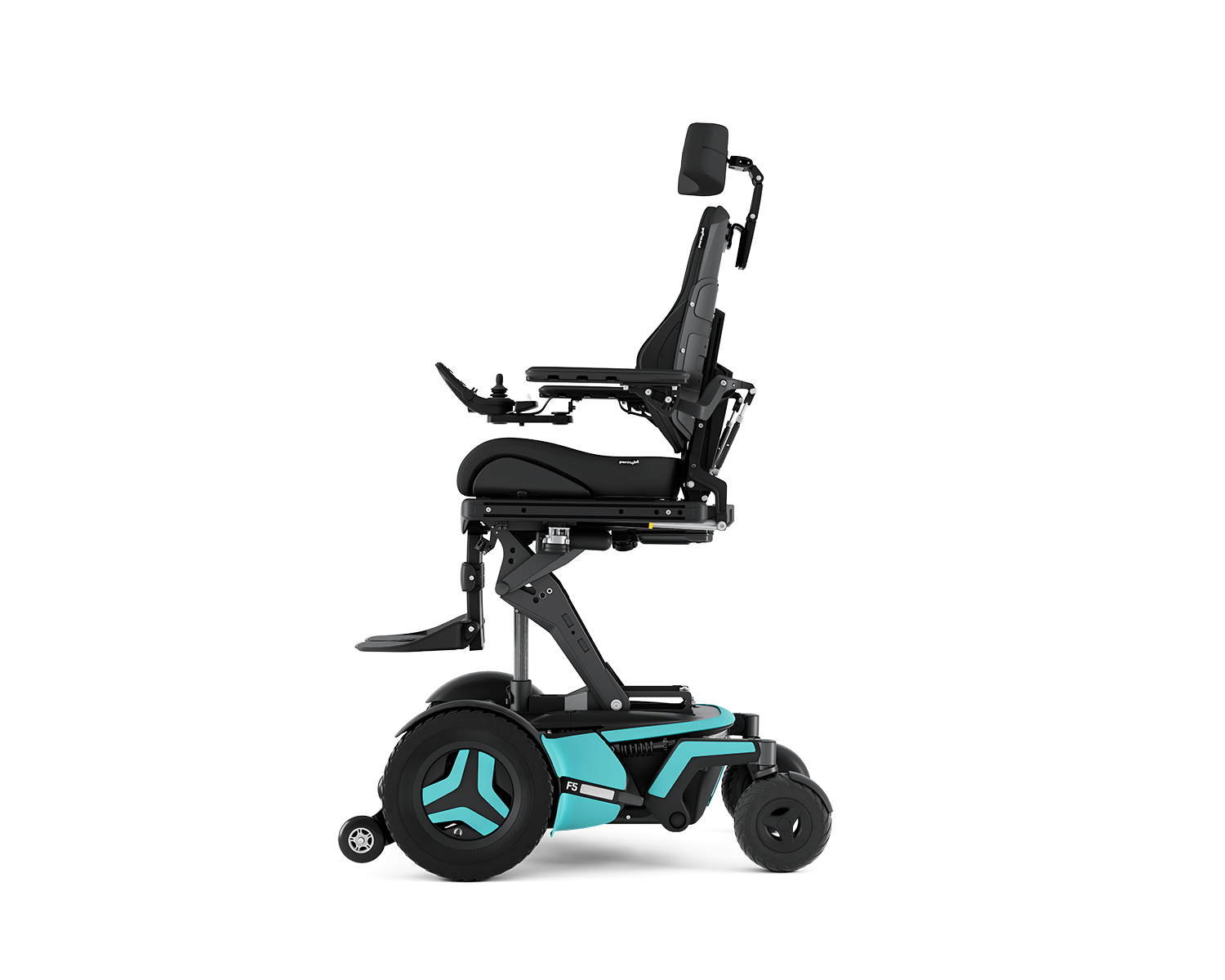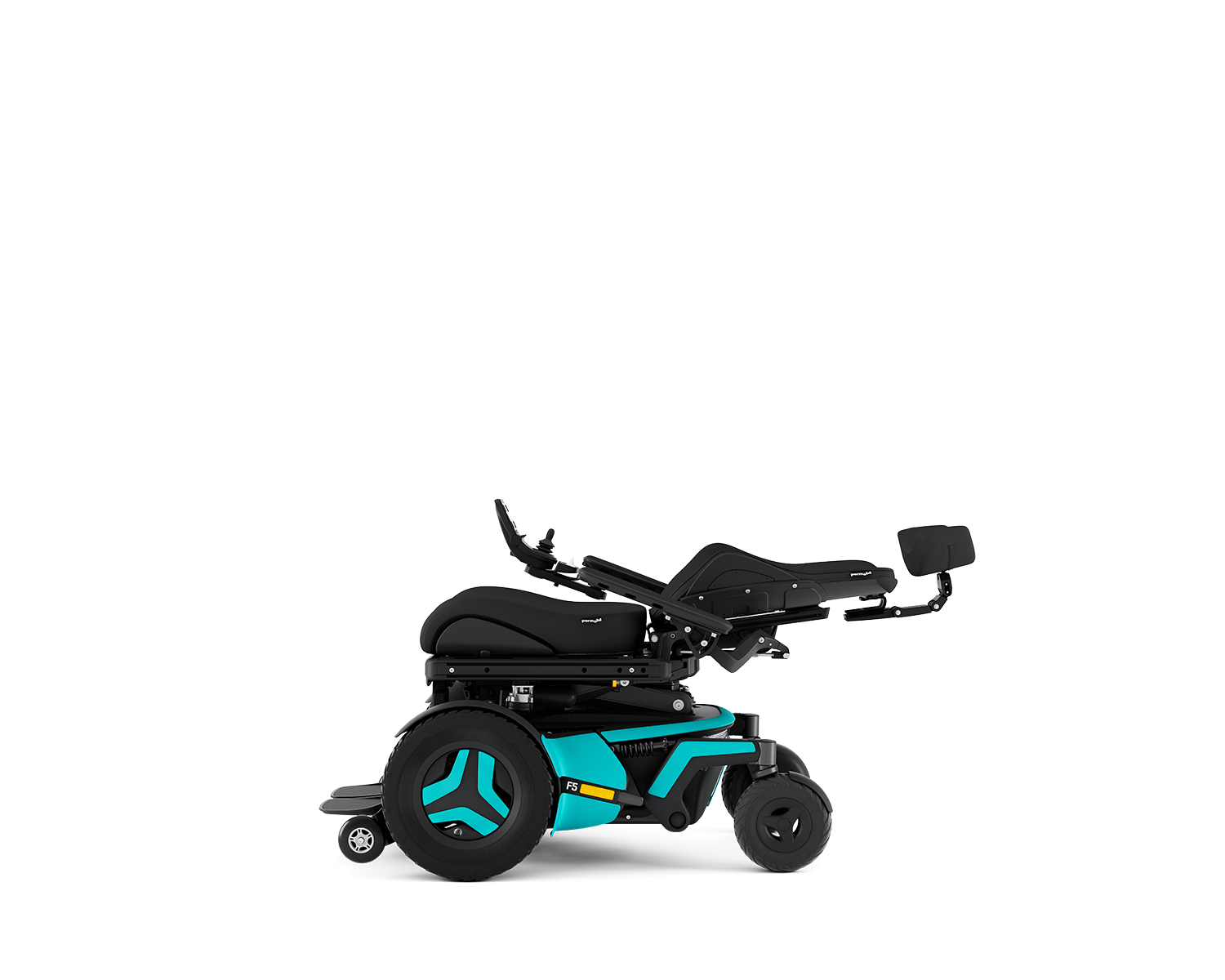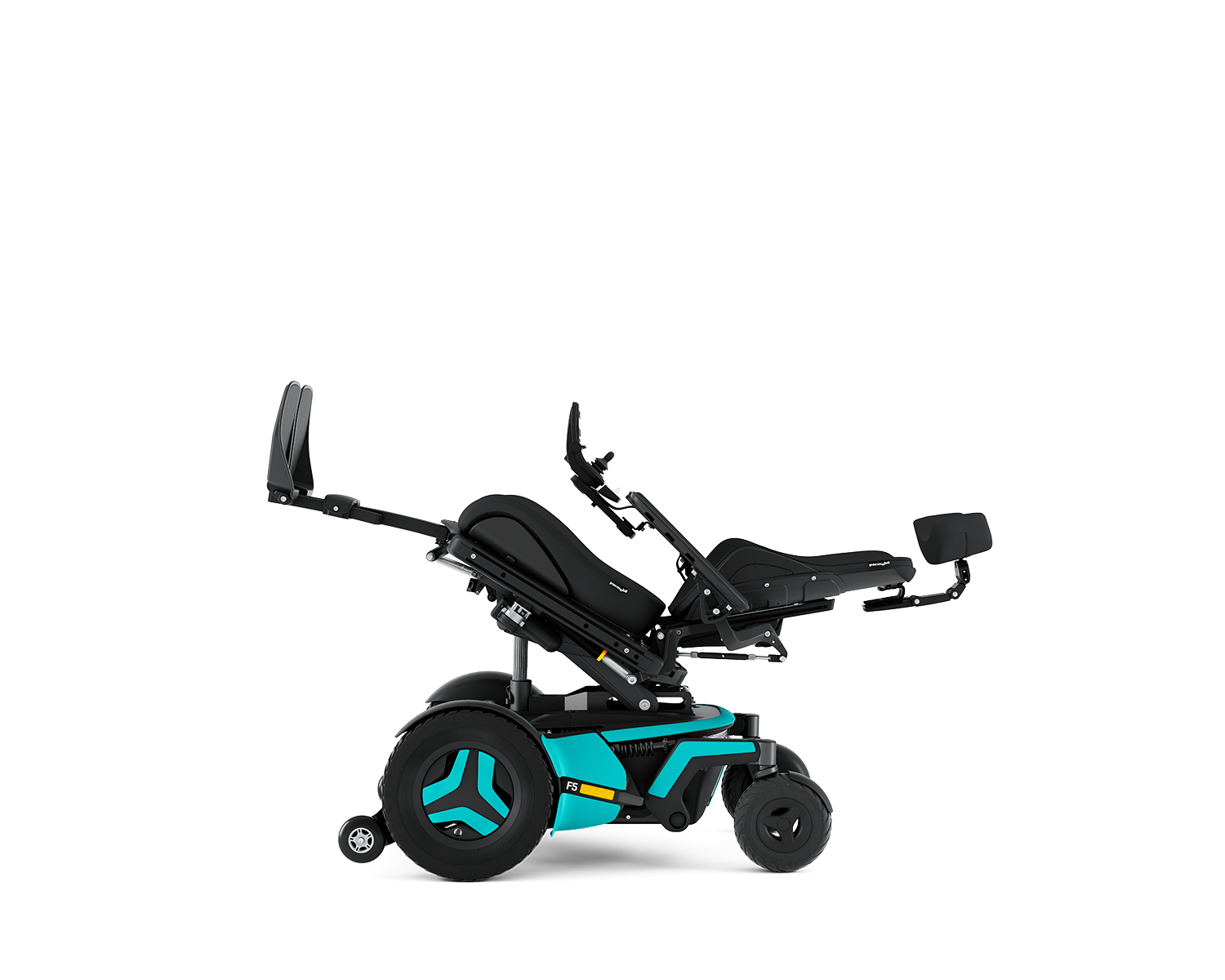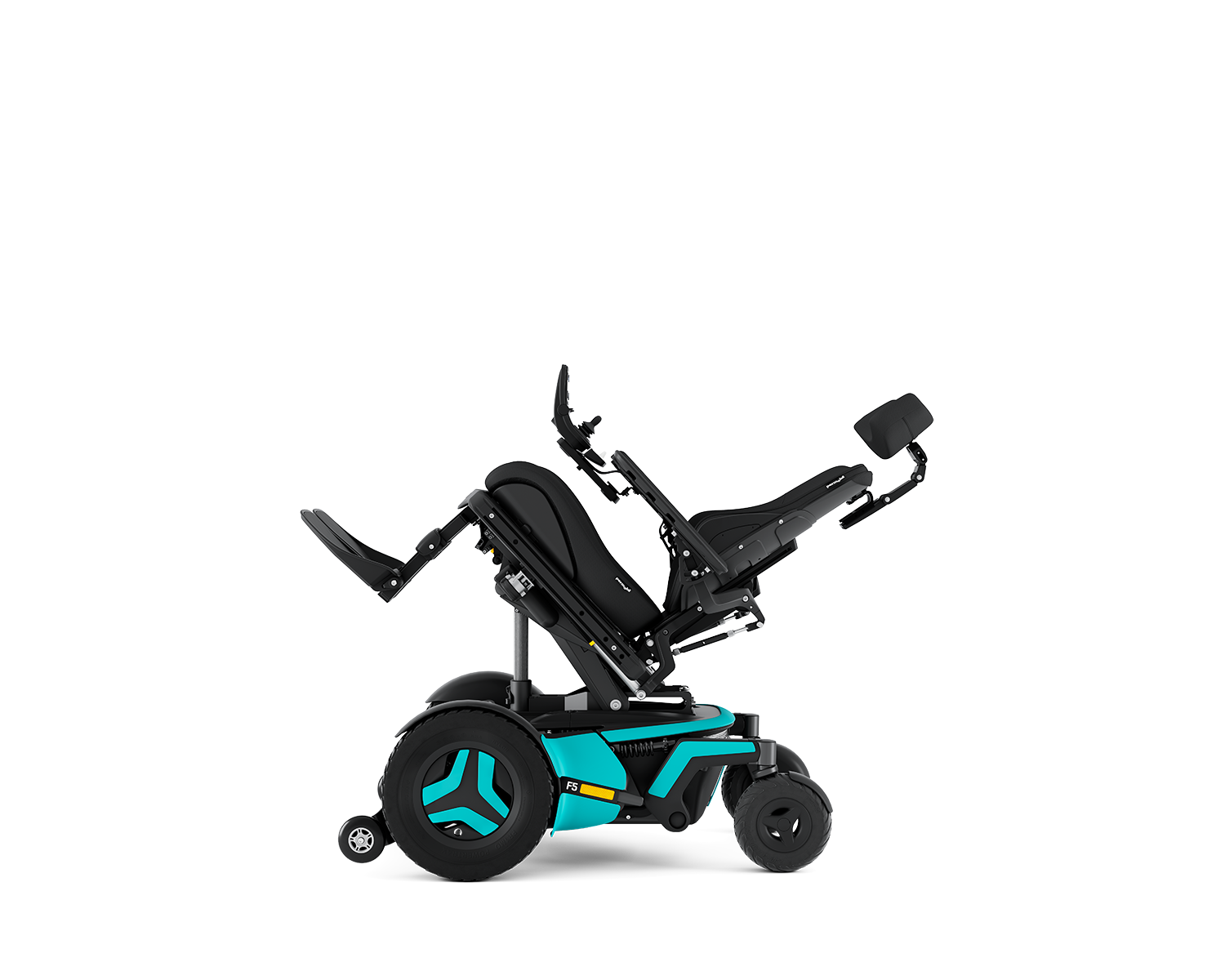With the upcoming release of our new Power Seat Function (PSF) Brochures, I thought there was no better time to reflect on my own clinical application of PSF’s and share some unique and successful client stories.
I used to think PSF’s seemed like the cherry on top. Not always essential, but often not a bad thing, if you could get them across the line.
It wasn’t until I worked with a range of clients with different abilities, that I started to think about how my day may look if I were stuck at one height, or in one position for a prolonged period. Would I be able to grab a drink, get into bed, or feed my child or pet? How many times a day do I alternate between sitting, standing, bending, or reaching?
So, let’s get into what different PSF’s there are and how they can be used to promote independence and enable someone to achieve a variety of goals.
Posterior Tilt
The non-negotiable for me was always posterior tilt, which is thankfully a standard feature on most PWC’s. Different PWC’s will come with different amounts of tilt, so it’s critical to check what degree of posterior tilt a PWC can achieve, especially if your client relies on tilt alone to pressure relieve.
In addition to providing someone with an effective means of pressure relieving, I’ve seen posterior tilt have several functional benefits. My tall clients would activate posterior tilt when entering vehicles, to reduce their overall height, to ensure their heads weren’t taken off during this transfer. It’s also a great help for those with absent trunk innovation to help maintain their seated position when driving over uneven or rough terrains.
Active Height

If a client could transfer independently, I used to think that was my green tick to justify active height to different funding bodies. It enables a user to adjust their seat height, eliminating the need to complete uneven transfers, which in turn promotes shoulder integrity and reduces care needs, offering pretty great value for money.
But what about those clients who can’t independently transfer? Are they just expected to go without active height? It wasn’t until I had my first client, who was a parent, that I really gave active height a serious thought for someone who was not able to transfer themselves. Despite having a range of life roles, her role as a parent was paramount to her identity and was something that wasn’t going to change just because she had acquired a disability. Active height enabled her to reach her son’s medication from a high cupboard, make herself a cup of tea and help cook family meals. This feature was essential in enabling her to continue to fulfil her active roles as both a parent and partner.
Power Recline

Similarly, to what I mentioned before, it took me a while to recognise the functional benefits of power recline, but once I did, it often became a feature I considered essential for several reasons. I was once scared about increasing unnecessary shear and friction forces before I realised this PSF could be used in combination with other PSF’s to minimise adverse risks whilst promoting goal achievement.
Power recline enabled lots of my clients to self-catheterise; which is the gold standard for neurogenic bladder management. Opening the seat to back angle enabled greater access to the perineal area, promoting independence with toileting and lower body dressing. Combining power recline with tilt has also been shown to provide a greater amount of pressure relief, further reducing interface peak pressure than when using tilt alone (Jan and Crane, 2013).
Elevating Leg Rests

Power elevating leg rests (ELR), quite literally elevate the legs and enable a footrest to range between 85-180 degrees (F5 series). I often considered this the ‘yin and yang’ of power recline, as elevating the leg rests can help reduce shear and friction forces when power recline is activated, as it prevents someone sliding forward in their chair (thanks gravity!).
I often used ELR in conjunction with tilt and recline to lift the legs above the heart to help with lower leg oedema, which can be a medical complication for those with reduced lower limb movement (Fujita et al., 2010). Functionally I’ve even seen an end user use ELR for toileting. They would elevate their leg rests to approximately 170 degrees (very flexible hamstrings!), drive over a toilet, lean forward and open their (urine) leg bag, which would then drain into the toilet!
So, who's the real expert?
I often found clients were way better than me at figuring out what features would enable them to achieve more. So, give your clients a go at trying out different PSF’s during different functional tasks. What are their goals? What seat functions may assist with their goal achievement? What PSF’s can be used together to achieve even more?
If you’d like more information on PSF’s email our Clinical Education team at education.au@permobil.com or Education.NZ@permobil.com
References:
Dicianno, B.E., Lieberman, J., Schmeler, M.R., Souza. A., Cooper, R., et al (2015) Rehabilitation Engineering and Assistive Technology Society of North America’s Positoin on the Application of Tilt, Recline, and Elevating Legrests for Wheelchairs Literature Update. Assist Technol. 27(3) 19308 doi: 10.1080/10400435.2015.1066657
Fujita, D., Mori, A., Cleminson, T., Kada, M., Fukuda, J., Kobara, K., . . . Watanabe, S. (2010). Using Seating Techniques as a Preventative Measure against Lower Limb Edema-The Effect of Combining Tilt Angle and Reclining Mechanisms on Wheelchairs. Journal of Physical Therapy Science, 22(4), 437-441.

Rika Millen
Clinical Services Specialist
Permobil APAC
Rika Millen joined Permobil in May 2022, as a Clinical Services Specialist. After graduating from Western Sydney University in 2014, with a Bachelor of Health Science/Master of Occupational Therapy, Rika began working at Prince of Wales Hospital in Sydney. After rotating through a range of clinical areas, Rika moved into the Spinal Injuries Unit, where her passion for seating and assistive technology was ignited. Rika has since worked closely with clients and therapists across Seating Clinic, Spinal Pressure Care Clinic and the Spinal Injuries Unit to devise customised seating solutions to enable clients to reach their goals.
Most recently working as the OT Team Leader in the Spinal Injuries Unit, Rika developed a passion for teaching and mentoring clinicians, which she hopes to develop and expand on in her new role at Permobil. Outside of work you’ll find Rika running, hiking, skiing or working on her golf handicap.
